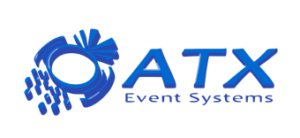Demystifying Strategic Meetings Management
 As you endeavor to begin a Strategic Meetings Management Program (SMMP), there are sure to be parts of the process that seem confusing or overly complex in some way. In our original two-part series on beginning a SMMP, we covered the reasons why it’s beneficial for organizations as well as how to get the ball rolling with your executive team.
As you endeavor to begin a Strategic Meetings Management Program (SMMP), there are sure to be parts of the process that seem confusing or overly complex in some way. In our original two-part series on beginning a SMMP, we covered the reasons why it’s beneficial for organizations as well as how to get the ball rolling with your executive team.
Once you do have buy-in from all the necessary stakeholders it’s time for you to start the implementation of the program. As we all know, developing and documenting your SMMP policy is only half the battle. Once it’s been documented, it’s time to put your program into action. And this is where some common myths begin to rear their heads, causing otherwise level-headed meeting managers to get frustrated and confused.
Before you enter your execution phase of your SMMP, let’s dive in and dispel some of the most common myths associated with SMMPs and their use.
SMMP Myths and Realities
As with any business process, the outcomes will be largely dependent upon the organization itself. That’s why it’s important before you begin to ensure that the policies you’ve created reflect the values and realities of your unique organization.
Myth 1: It’s too complex.
You can make anything too complex and daunting. But your SMMP doesn’t have to be. While it can have many steps to implementation, you can keep it simple by only including the steps that make sense for your particular organization. For example, you can start by creating a path for your SMMP that clearly defines each step. This could include starting with defining meetings, creating a central meeting register, creating a meeting calendar, identifying payment solutions, and reporting and analysis. A defined plan will help keep you from overcomplicating the process.
Myth 2: It’s too expensive.
In some cases, there are significant up-front expenses for organizations to implement a SMMP. If you go all-in on a technology stack to enable fully automated processes, then yes, you will incur some significant expenses. But most SMMP best practices encourage a phased approach that allows you to invest in smaller pieces of technology as you go rather than all at once. The goal of SMMPs is to save money for organizations large and small – many seeing savings of 10-15% over the first two years – so even though you’ll see some up-front expenses, but will save over time.
Myth 3: Technology should lead the charge.
While technology should be considered when create your SMMP, it will not fix your meeting shortcomings on its own. When SMMPs first came on the scene nearly a decade ago, many people were using faxes and spreadsheets to manage their program and were able to do so successfully. So, it’s not necessarily the technology that’s improving your meetings processes, it’s the policies and buy-in behind it. If you don’t have appropriate training or procedures in place or if you can’t get anyone to use the technology, then you’ve lost the battle. But if you have strong policies and ways to measure success, you’re certain to have success in starting your SMMP. Starting with a strong base enables you to bring on additional technologies at a pace that suits your particular organization and stakeholders.
Moving Forward with your SMMP
These myths can cause unnecessary roadblocks during your SMMP implementation phase. The better you can resolve these myths with people in your organization before you begin to integrate your program for adoption throughout the organization, the better you will setup the program for success. You can get more details and more help by clicking here.
Remember, a strong SMMP can save organizations 10-15% over the first two years, expanding even more in the following years once the initial investment is paid off. The benefits far outweigh the potential pitfalls when getting started, but without buy-in from those who will use it the most, you will never be able to overcome obstacles that stand in your way during implementation. Acknowledging these myths and helping demystify the process with your team is the best way to ensure long-term success.


